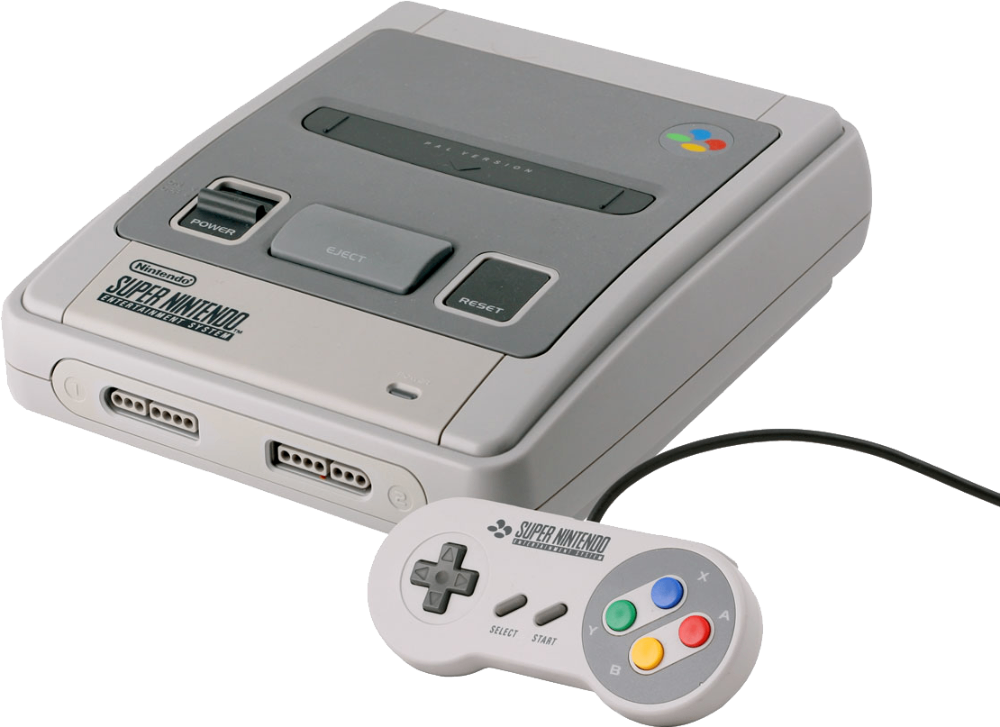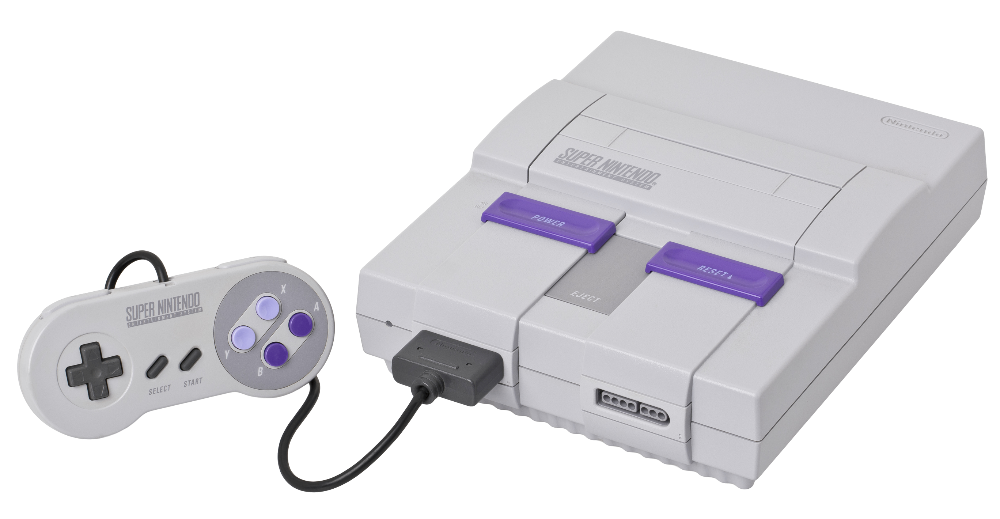

The Super Nintendo Entertainment System (SNES) was Nintendo’s 16-bit console, released in Japan as the Super Famicom in 1990 and in North America and Europe in 1991 and 1992, respectively. The successor to the 8-bit Nintendo Entertainment System (NES), the SNES brought significant graphical and audio improvements to the console gaming market, ultimately winning the “console war” of the 16-bit era against its main rival, the Sega Genesis.
Technical specifications
The
SNES was designed with a modular approach, allowing for enhancements to be built directly into game cartridges, enabling superior graphical and audio capabilities.
- CPU: It featured a Ricoh 5A22 16-bit processor, a derivative of the 65C816 microprocessor.
- Graphics: The system’s Picture Processing Unit (PPU) offered a color palette of 32,768, with up to 256 on-screen at once. This allowed for more colorful and detailed graphics than its competitors.
- Mode 7: A unique graphics mode allowed for background layers to be rotated and scaled, creating a pseudo-3D effect. This was famously used in games like Super Mario Kart and F-Zero.
- Audio: The SNES included a dedicated Sony sound chip, the SPC700, which provided stereo sound with 8 channels of 16-bit ADPCM audio. This enabled high-quality music and sound effects.
- Enhancement chips: Some cartridges contained special chips, like the Super FX chip used in Star Fox, to perform complex calculations for polygons and other 3D effects that the main CPU could not handle on its own.
